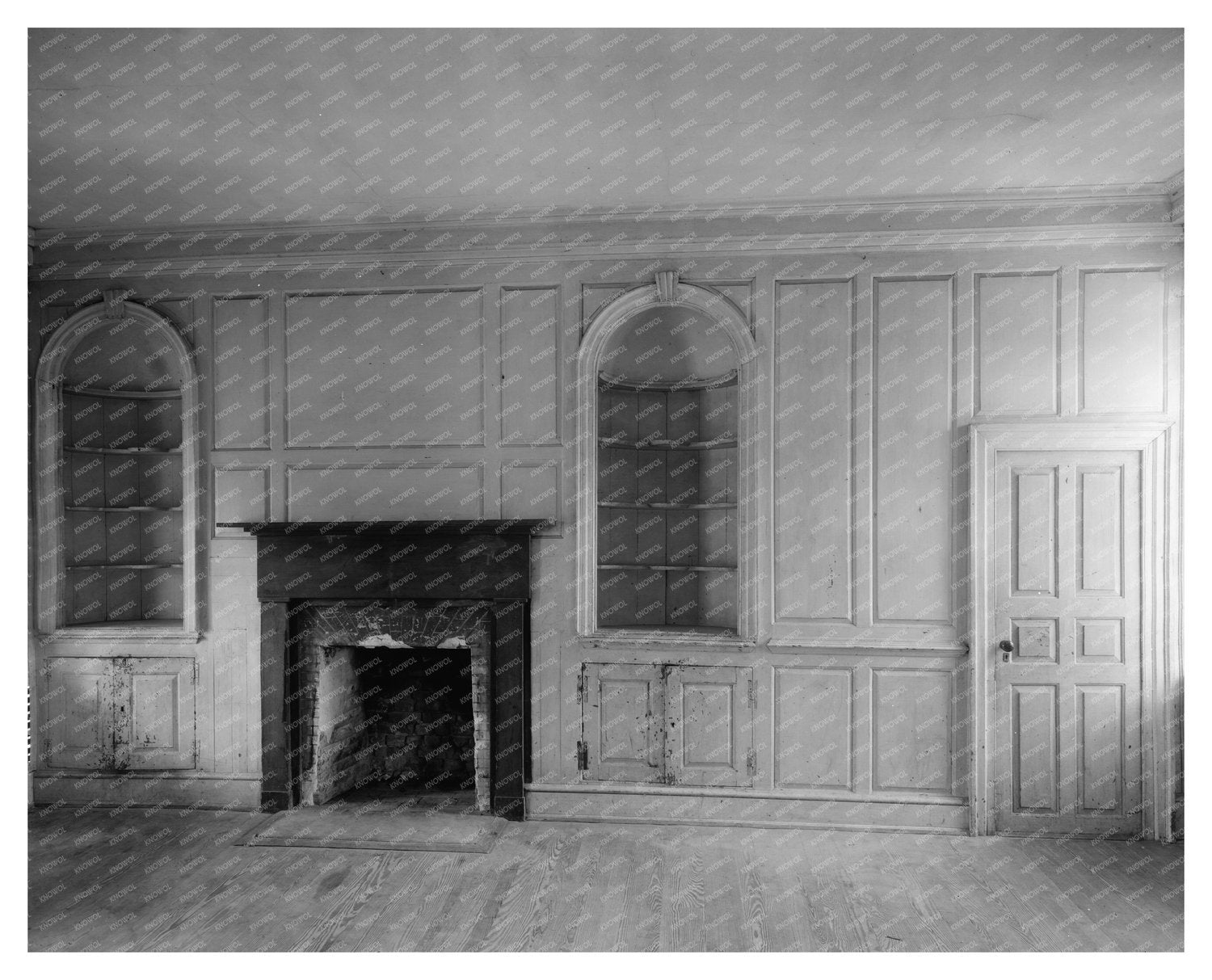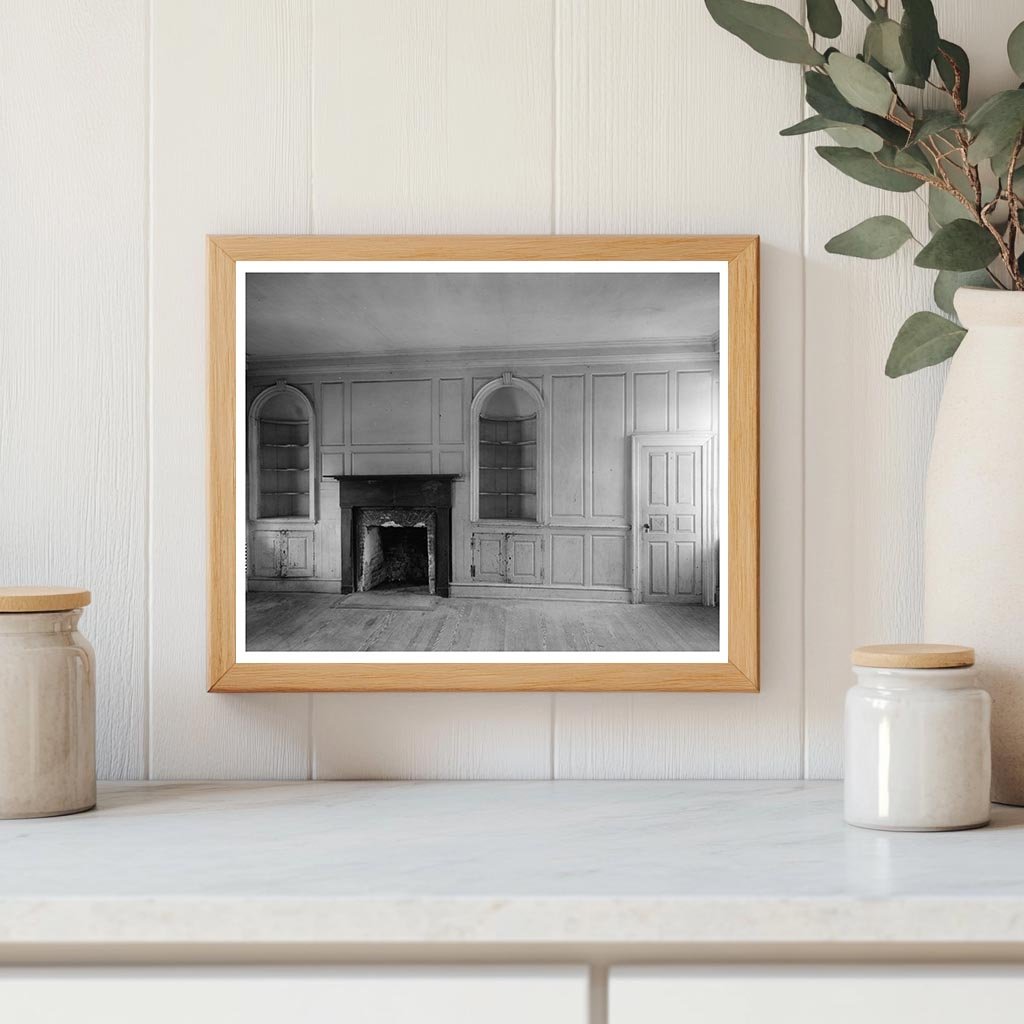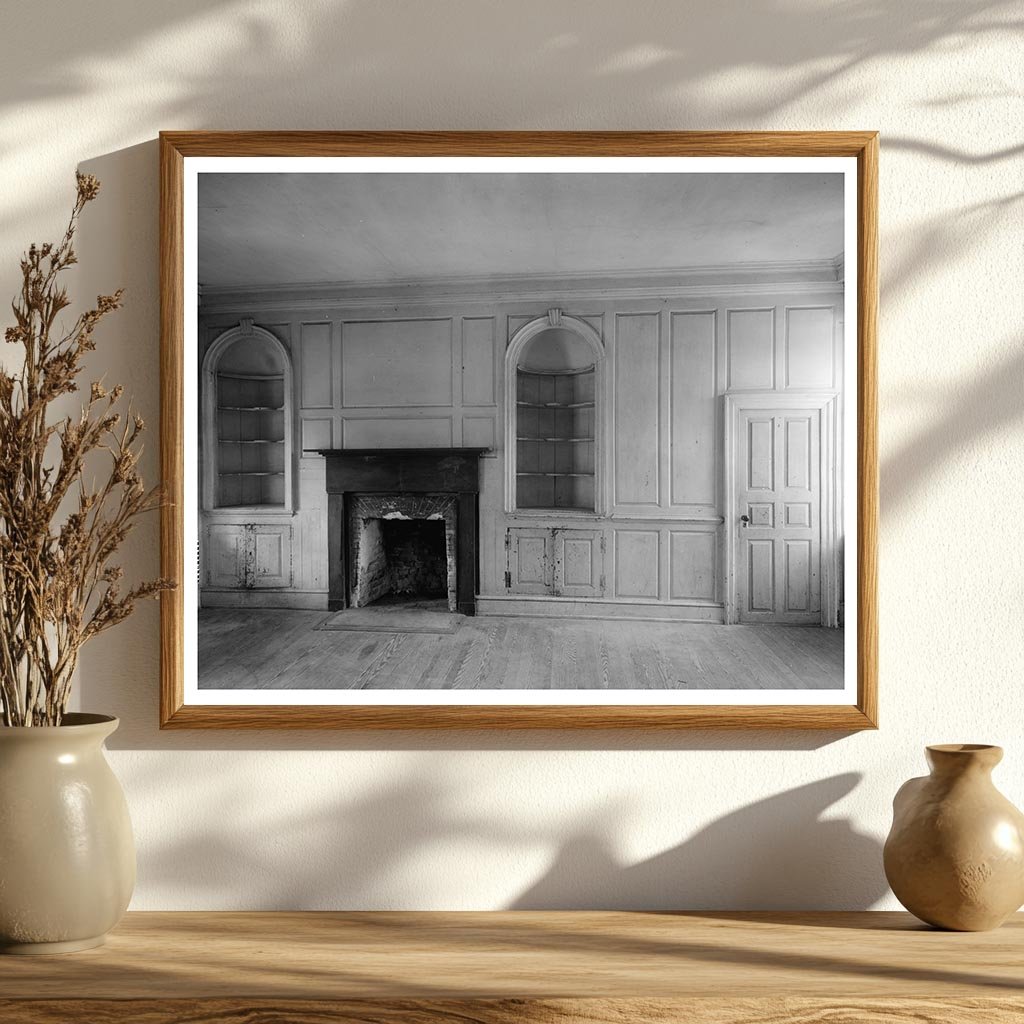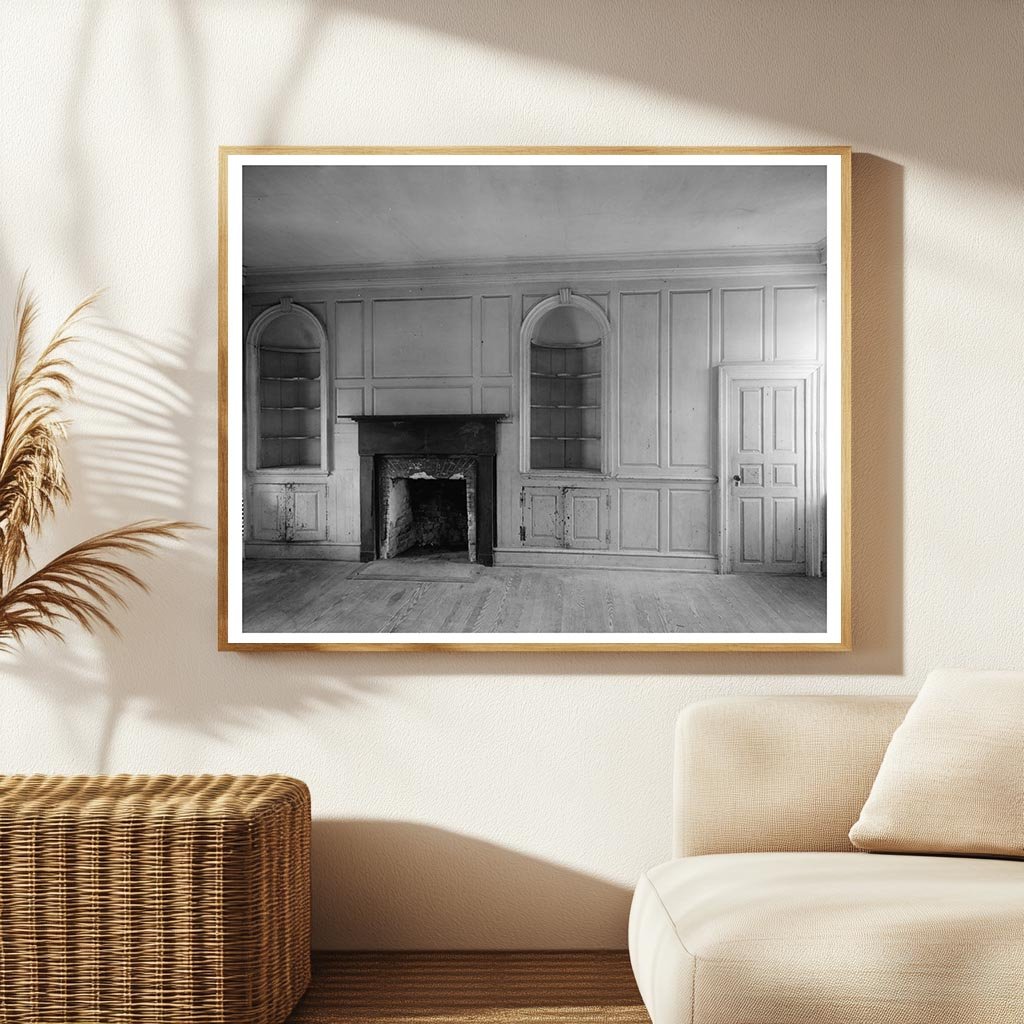



Chaptico, MD Colonial Lodge History - 1679 Architecture
This vintage photograph captures an architectural gem located in St. Marys County, Maryland, specifically in the Chaptico vicinity. Originally built as a hunting lodge for Sir Thomas Notley before 1679, the structure reflects the early colonial architectural style. The image serves as a historical record of the building, which later passed to Colonel William Rozier and his wife, Lady Ann Sewall, the stepdaughter of Lord Baltimore.
The photograph is part of the Carnegie Survey of the Architecture of the South, a significant collection that documents the architectural heritage of the region. Notable features include intricately designed fireplaces, keystones, and well-crafted shelving, revealing the craftsmanship of the period.
This image, created by Frances Benjamin Johnston, is a vital piece of Marylands history, showcasing the evolution of colonial architecture and the lifestyle of early settlers. It is an important resource for historians, architects, and anyone interested in the rich heritage of St. Marys County.

Chaptico, MD Colonial Lodge History - 1679 Architecture
